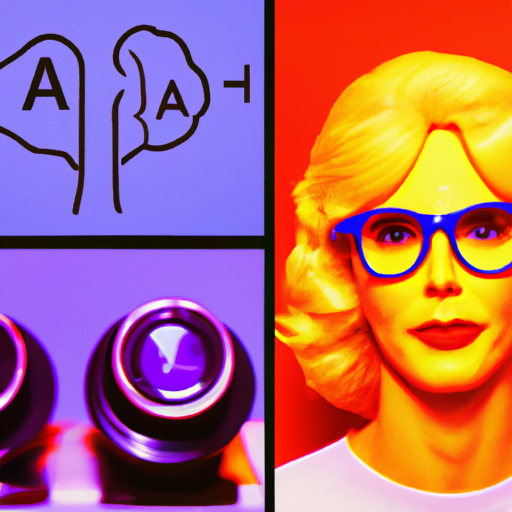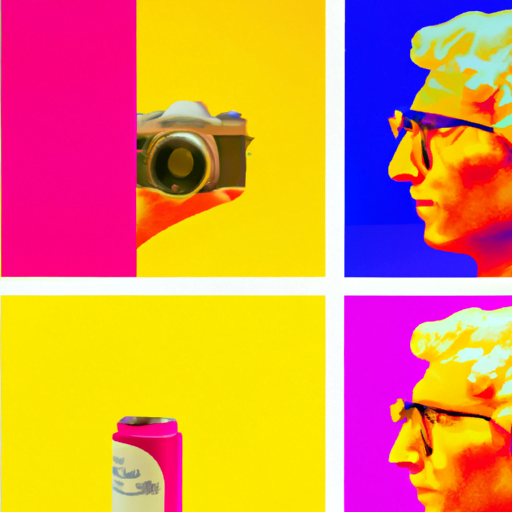
-
Table of Contents
- Exploring the Intersection of Graphic Design and Neuroscience
- The Power of Visual Communication
- The Science Behind Visual Perception
- 1. Gestalt Principles
- 2. Color Psychology
- 3. Typography and Readability
- Case Studies: Applying Neuroscience to Graphic Design
- 1. The Obama “Hope” Poster
- 2. Website Design for Conversion Optimization
- The Future of Graphic Design and Neuroscience
- Conclusion
Exploring the Intersection of Graphic Design and Neuroscience

Graphic design and neuroscience may seem like two completely unrelated fields, but in recent years, there has been a growing interest in exploring the intersection between the two. As our understanding of the human brain continues to advance, designers are discovering new ways to leverage this knowledge to create more effective and impactful designs. In this article, we will delve into the fascinating world where graphic design and neuroscience meet, and explore how this collaboration can lead to innovative and influential design solutions.
The Power of Visual Communication
Before we dive into the connection between graphic design and neuroscience, it is important to understand the power of visual communication. Humans are highly visual creatures, and our brains are wired to process visual information more efficiently than any other type of information. In fact, research has shown that the brain can process images in as little as 13 milliseconds, making visual communication a powerful tool for conveying messages and evoking emotions.
Graphic design, as a discipline, harnesses this power of visual communication to create visually appealing and effective designs. Whether it’s a logo, a website, or a poster, graphic designers use various elements such as color, typography, and layout to communicate messages and engage the audience. However, to truly create impactful designs, designers need to understand how the human brain perceives and processes visual information.
The Science Behind Visual Perception
Neuroscience provides valuable insights into how the brain perceives and processes visual information. By studying the neural mechanisms involved in visual perception, researchers have uncovered several key principles that can inform graphic design practices.
1. Gestalt Principles
The Gestalt principles, a set of laws that describe how humans perceive visual elements as a whole, are particularly relevant to graphic design. These principles include proximity, similarity, closure, continuity, and figure-ground relationship. By understanding these principles, designers can create designs that are visually cohesive and easily comprehensible.
For example, the principle of proximity suggests that elements that are close to each other are perceived as a group. Designers can use this principle to create visual hierarchy by placing related elements closer together. Similarly, the principle of closure suggests that the brain tends to fill in missing information to perceive complete objects. Designers can leverage this principle to create minimalist designs that rely on the viewer’s brain to complete the missing parts.
2. Color Psychology
Color plays a crucial role in graphic design, and research in color psychology has shown that different colors can evoke specific emotions and influence behavior. For example, warm colors like red and orange are often associated with energy and excitement, while cool colors like blue and green are associated with calmness and tranquility.
By understanding the psychological effects of colors, designers can strategically choose colors that align with the intended message or brand identity. For instance, a healthcare website might use blue tones to create a sense of trust and reliability, while a food delivery app might use vibrant red to stimulate appetite and excitement.
3. Typography and Readability
Typography is another crucial aspect of graphic design that can significantly impact how information is perceived and understood. Neuroscience research has shown that different fonts and typographic elements can affect reading speed, comprehension, and emotional response.
For example, studies have found that serif fonts are generally easier to read in print, while sans-serif fonts are more legible on screens. Additionally, the size and spacing of letters can influence reading speed, with larger letters and wider spacing leading to faster reading times.
Case Studies: Applying Neuroscience to Graphic Design
Now that we have explored the scientific principles behind visual perception, let’s take a look at some real-world examples where graphic designers have successfully applied neuroscience insights to their work.
1. The Obama “Hope” Poster
One of the most iconic examples of the intersection between graphic design and neuroscience is the Obama “Hope” poster created by Shepard Fairey during the 2008 presidential campaign. Fairey strategically used bold colors, high contrast, and a simplified yet recognizable portrait of Barack Obama to create a visually striking and emotionally resonant design.
By leveraging the brain’s preference for faces and its ability to quickly process high-contrast images, Fairey’s design captured the attention of viewers and became a symbol of hope and change. The poster’s success can be attributed, in part, to Fairey’s understanding of how the brain perceives and responds to visual stimuli.
2. Website Design for Conversion Optimization
Neuroscience insights can also be applied to web design to optimize conversion rates. Research has shown that certain design elements can influence user behavior and decision-making processes.
For example, eye-tracking studies have revealed that users tend to focus on faces and areas with high contrast. By strategically placing important information or call-to-action buttons in these areas, designers can increase the likelihood of user engagement and conversions.
Additionally, research has shown that the brain prefers simplicity and avoids cognitive overload. By simplifying the design, reducing distractions, and using clear and concise messaging, designers can create a more user-friendly experience that encourages action.
The Future of Graphic Design and Neuroscience
The intersection of graphic design and neuroscience holds immense potential for the future. As our understanding of the brain continues to advance, designers will have even more tools at their disposal to create impactful and influential designs.
Advancements in brain imaging technology, such as functional magnetic resonance imaging (fMRI), can provide designers with real-time insights into how the brain responds to different visual stimuli. This knowledge can inform design decisions and help create designs that resonate with the target audience on a deeper level.
Furthermore, as virtual reality (VR) and augmented reality (AR) technologies become more prevalent, designers can leverage neuroscience research to create immersive and engaging experiences. By understanding how the brain processes and perceives virtual environments, designers can optimize the user experience and create truly transformative designs.
Conclusion
The intersection of graphic design and neuroscience offers a wealth of opportunities for designers to create more impactful and influential designs. By understanding how the brain perceives and processes visual information, designers can leverage this knowledge to create designs that effectively communicate messages, evoke emotions, and drive action.
From the principles of Gestalt to the psychology of color and typography, neuroscience provides valuable insights that can inform design decisions. Real-world examples, such as the Obama “Hope” poster and conversion-optimized websites, demonstrate the power of applying neuroscience to graphic design.
As our understanding of the brain continues to advance, the future of graphic design holds even more exciting possibilities. By embracing emerging technologies and leveraging neuroscience research, designers can create immersive and transformative experiences that captivate audiences and leave a lasting impact.
